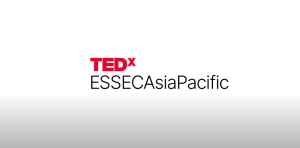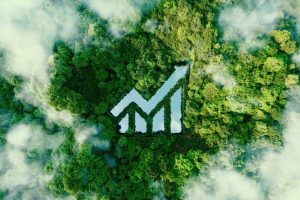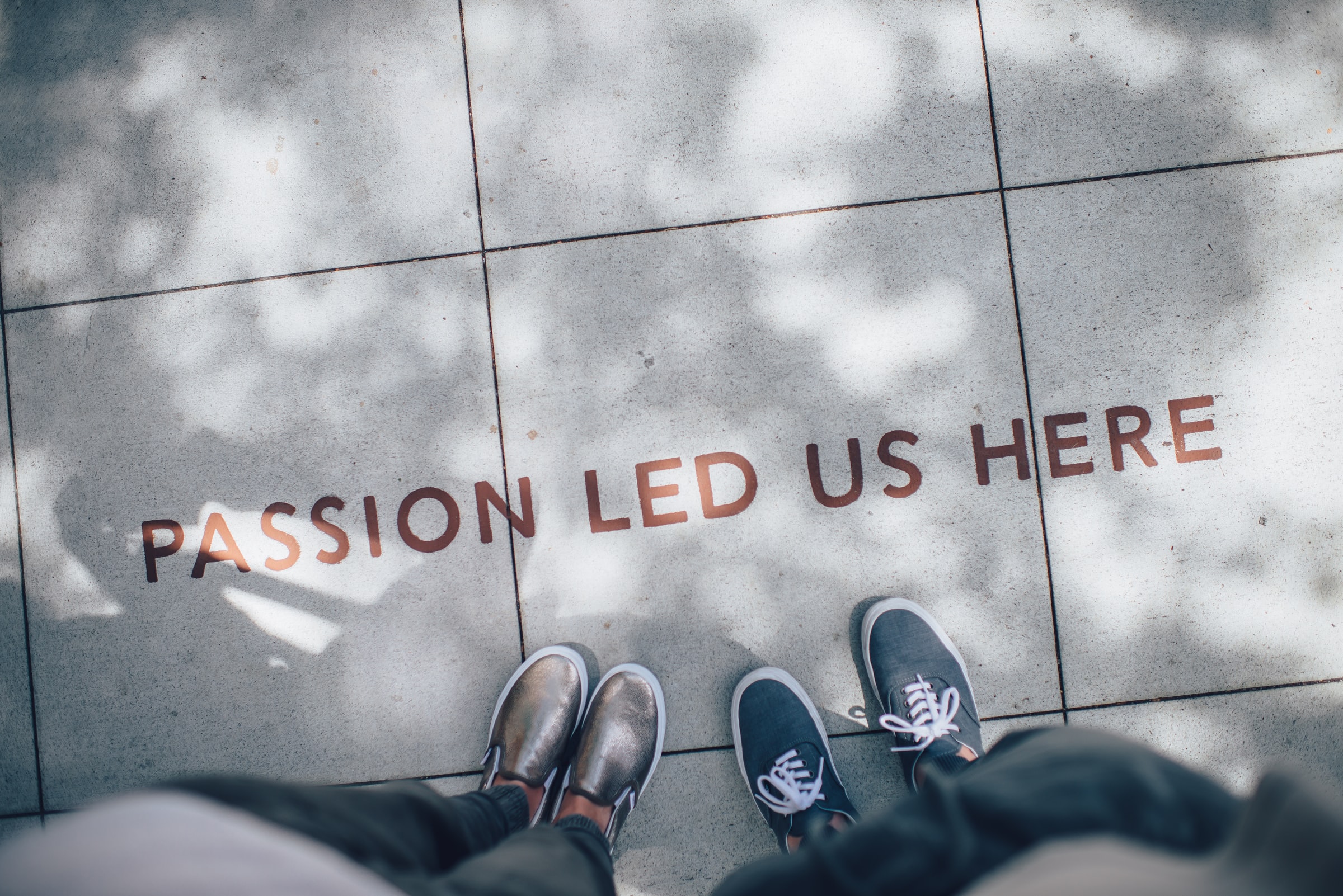An end that’s a beginning and growth that regenerates – businesses rising to meet the Circular Economy are not only contributing to the restoration of our natural and social systems, but are also seizing upon a USD 4.5 trillion economic opportunity.
Propelled by intentional design, the Circular Economy presents an alternative to our prevailing “take-make-dispose” economy. It’s based on three principles: eliminate waste and pollution, circulate products and materials (at their highest level), and regenerate nature. 1
We’re now living the Decisive Decade. Our linear economic model is reaching a critical threshold. 2 Sustaining our current way of life requires an ecological footprint equivalent to 1.6 Earths.
Every industry will confront our planetary resource limits.
The Circular Economy is changing the way we think about and interact with our economic system. It’s establishing a more sustainable production model by fundamentally reshaping the methods through which we manufacture, consume, and manage resources.
The circular nature of life is depicted in many ancient cultures, from Vikings’ Ouroboros to Taoist symbol of Yin-Yang. Circular Economy is a way to align human-made economy with the natural world of which we and the economy are part of, creating a virtuous cycle that regenerates. – Anna Itkin, Managing Partner, The Inceptery
At the core of every enterprise lies its business model, the driving force of its actions and impact. Transitioning from a conventional business model to the use of innovative circular practices necessitates the resolve of Business Model Innovation.
Pioneering companies at the helm of this innovation are creating new industries and realising the economic benefits.
Realising Value: The Business Case for Circular Models
Simply put, Circular Models offer “more value from less stuff.” They enable a cost advantage and superior customer value.
Let’s break that down.
The World Business Council for Sustainable Development (WBCSD) has identified three major advantages that can be gained from circular initiatives:
– Accelerated Growth
– Enhanced Competitiveness
– Risk Mitigation
At a more granular level, this includes value from:
Cost Savings
Adopting circular practices can lower costs associated with raw materials, production, and waste management. These savings can be passed on to consumers.
Longer Customer Relationships
Through services like maintenance, repair, and upgrades, circular models can nurture longer-lasting relationships with customers. This increases opportunities for repeat business.
New Revenue Streams
New services such as leasing, sharing, or subscription-based models, can generate new sources of revenue beyond traditional product sales.
Innovation and Differentiation
Innovation drives business expansion and a competitive edge. By introducing new products, services, and user experiences, companies can promote growth through diverse avenues, including strategic partnerships and the use of disruptive technologies.
Capturing New Markets
Citizen demand for sustainable products is rising. Circular models can facilitate entry into markets with demand for sustainable products and services, enabling businesses to tap into new and growing customer segments.
Enhanced Resilience to Supply Chain Disruptions
Circular Models extend product and material lifecycles. This reduces reliance on raw materials, helps manage resource price fluctuations, and mitigates supply chain disruption risks.
5 Business Models Paving the Way to a Circular Economy
Beyond core environmental and social benefits, Circular Models articulate the logic of how an organisation generates value and competitiveness.
These models contribute to the Circular Economy through two main strategies 3:
- Extending Product Value
- Extending Resource Value
By embodying the above principles, here are 5 key Circular Models driving the transition to the Circular Economy:
Product as a Service Business Model:
This is the concept of selling a service or outcome rather than a physical product. Customers will pay for the value and benefits of a product without owning the physical item.
From a business perspective, product-as-a-service models prioritise customer retention over maximising unit sales.
For example, Circular is a tech subscription service offering Singaporean and Australian customers the latest technology at affordable prices. Circular is working to “to usher in a new era where subscribing, rather than buying, is the norm.”
Resource Recovery Model
This model is based on converting waste into secondary raw materials. Value is created by recycling, composting, and repurposing discarded items.
Tridi Oasis, a female-led waste recycling company, showcases this model in action. In recent years, they have emerged as a key player in Indonesia’s plastic circular transition. The business recycles PET bottles into PET flakes, which are used to manufacture circular packaging and textiles.
Since 2016, Tridi Oasis has recycled over 250 million plastic bottles, making significant headway in tackling Indonesia’s growing waste problem.
Product Use extension
This is the practice of prolonging the lifespan of a product beyond its originally intended usage period.
This can be achieved through various approaches, including refurbishment and remanufacturing, software updates, consumer education, improved durability, repair and maintenance, and upgradability (designing products with modular components that can be easily upgraded or replaced).
Companies that have made ‘repair’ an essential aspect of their business model include Patagonia and Caterpillar.
Sharing Economy Concept
The sharing economy helps people make the most of underutilised assets or services. Here, people share or rent idle assets in an affordable and/or convenient way, typically through a digital platform.
Airbnb and Uber are major players in the sharing economy, but despite their market success, they have inadvertently caused negative effects in some places of operation.
For instance, hosts and guests using Airbnb experience economic advantages, but these transactions can have negative outcomes for local communities, such as reduced affordable housing and higher rental prices. 4
Whilst both companies showcase the significant potential of sharing economy models, their widespread impact underscores the necessity for holistic circular design.
Systems thinking, encompassing circular design, emphasizes understanding relationships and connections with a focus on the ‘big picture.’ In other words, it considers interconnected systems as a whole. This approach provides valuable insights that can help identify and address intricate challenges within complex systems.
The application of systems thinking is fundamental for effective circular initiatives.
Circular Inputs
Circular inputs involve the replacement of traditional production inputs with bio-based, renewable, or recovered materials.
Examples include the use of upcycled building materials, bio-based packaging materials and bio-based chemicals for cosmetics and recycled textiles.
Initiating Your Shift to the Circular Economy: Steps to Get Started
Making the shift to a Circular Model requires a reimagining of how your organisation perceives and creates value.
You can do this by:
Assessing Your Current Operations
A good first step is to critically evaluate your current value proposition. This involves three key steps 5:
1. Identify aspects of your current model that lead to negative environmental and/or social outcomes (value destroyed).
2. Uncover untapped potential (value missed). Do you have under-utilised assets, resources, or capabilities? Do you understand customer needs or market segments that are underserved?
3. Innovate for new value creation to address identified gaps and challenges.
Establishing Clear Goals
Define concrete objectives for your circular economy transition. Whether it’s reducing waste in production, increasing product lifespan, or enhancing resource efficiency, clear goals will guide your efforts and provide a benchmark for success.
Collaborating with Suppliers and Partners
Circularity often extends beyond your organisation’s boundaries. Collaborate closely with your suppliers and partners to align strategies, share insights, and optimise your entire value chain.
Engaging Your Customers
Your transition to Circular Models can be a powerful marketing tool for your business. Inform your customers about the benefits of new products or processes. Customers may take time to adapt to new user experiences, but effective communication can help them overcome initial adaptation challenges and generate interest and excitement in new offerings.
Monitoring and Adapting
Continuously monitor, measure, and adapt circular practices while communicating progress transparently. Flexibility and adaptability are key for sustainable long-term growth.
Future Outlook and Challenges
Fueled by increased political backing, attractive business models and societal pressure, the Circular Economy is predicted to dominate by the 2030s.
Companies transitioning now stand a greater chance of gaining and maintaining a competitive edge.
However, implementing circular initiatives can come with serious challenges, like unintended negative consequences and uncertainties regarding a project’s financial feasibility.
It’s important to note that the shift is a process and should be conducted with careful planning and a good understanding of the broader market system.
It also requires long-term thinking and the ability to adapt and pivot.
Looking for expert support as you make your transition?







